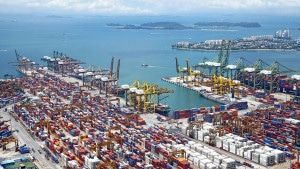Can Businesses Make International Shipping Eco-Friendly?

Shipping products overseas is an effective way to expand your reach as a business and facilitate growth. But from an environmental point of view, international shipping is a big problem. Flights create a lot of carbon emissions, and you are contributing to that by shipping products overseas. You also have to consider the emissions from vehicles on either side of the flight too, as well as the small details, like the packaging. When you add it all up, you’ll see the carbon footprint caused by international shipping is huge.
But before you decide to give up on it completely, it’s worth remembering that there are ways to make it greener if you are willing to invest some time and money. Here’s how you can make international shipping more eco-friendly.
Offset Your Emissions
The easiest way to manage your carbon footprint is to offset your emissions. If you work out how many carbon emissions your international shipping process creates, you can then buy carbon credits from companies that invest the money in green projects around the world. That way, you can still ship products internationally but you are contributing to a cleaner planet at the same time, so you balance things out.
Stop Using Air Mail
Flying is the least eco-friendly form of travel, so you should stop using air mail and start shipping products by boat instead. This will take a lot longer, so you need to manage the expectations of your customers. However, if you tell them that you are doing this to reduce your carbon emissions, most people will be happy to wait longer for their products. However, there are a few potential issues you need to manage. Firstly, your products may pass through more countries because they are not flying directly to their destination, which means there could be some customs issues. Make sure that you find a customs broker with TRACE certification to help you navigate these tricky issues. You also need to do your research into the shipping companies because large ships are still not the most eco-friendly form of travel. You will also create more emissions from traveling on land, so make sure that you calculate the total carbon emissions to make sure that it’s actually better than flying when you take everything into account. In most cases, it will be, but sometimes it isn’t.
Use Recyclable Packaging
This is one of the best steps that any e-commerce company can take if they want to go green , regardless of whether they ship internationally or not. But many international businesses forget about this because they are so focused on the logistics of cross-border shipping. Although that is important, you also need to find ways to reduce the amount of plastic and other harmful materials used in your packaging. The good news is, there are plenty of green alternatives out there.
International shipping isn’t good for the environment, but your business may rely on it to survive. The good news is, you can make it more eco-friendly if you follow these steps.


